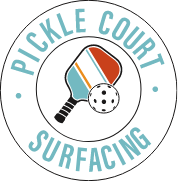Courts last an average of 9-25 years depending on the materials they’re constructed out of, how well they were built, the type of use they see, and how well you maintain them. In order to ensure that your court lasts as long as possible, ensure that you know how to maintain a court properly. Without proper maintenance, you’ll need to get court resurfacing done more frequently, costing you more money in the long run.
Here is what you need to know about common court issues that maintenance can help with and what you can do to maintain a court.
Common Issues With Courts

When you take all the necessary steps to maintain a court regularly, you can delay the onset or worsening of some of these issues and prevent others. Even with regular maintenance, some of the following issues may still occur as a simple result of aging and wear and tear.
Some common issues with courts include:
- Rusting
- Algae
- Mold and mildew (especially if the court is under tree cover)
- Birdbaths
- Cracks (these can happen from ground movement, age, and the weather)
- Fading (this is more of a concern with outdoor courts)
- Bubbles/blisters
Some issues, like birdbaths, may still occur over time, even when you routinely maintain a court. This doesn’t necessarily mean that you aren’t doing a good job maintaining your court. Issues like depressions in court surfaces (aka birdbaths) can occur due to regular wear from players’ games, as well as from ground shifting and settling.
How Much Maintenance Do Courts Need?
Not much! Fortunately, it’s fairly easy to maintain a court. You want to clean them regularly, but you don’t need to be obsessive about it. The exception to this is if the court is used professionally. Professional courts must be pristine and perfectly smooth at all times. Recreational courts, on the other hand, can handle only being cleaned when you see dirt.
How To Maintain Your Court
There’s a lot you can do to maintain a court. While listed all at once like we’ve done below, it may seem overwhelming, maintaining your court isn’t a daunting task. For example, some of the ways you maintain a court you only need to worry about every 4-8 years, like resurfacing.
Maintenance needs vary depending on whether you have an indoor or outdoor court. You must bear things like landscaping and drainage in mind for outdoor courts.

Here is what you can do to maintain your court.
- Sweep regularly. You only need to sweep when you notice dirt and debris on the court. Once a week usually suffices, though your court’s needs may vary depending on where it is and how much use it gets.
- Check for mold and mildew. You especially need to do this if your court is outside under tree cover or your area regularly has wet or humid conditions. Check shaded corners and areas where organic debris tends to accumulate.
- Clean regularly. Ensure that you use the correct cleaners. No not use acid-based cleaners, ammonia-based cleaners, or full-strength strippers, as these can damage your court surface. Clean any food and spills right away, as they could cause stains. Scrape gum off. Shoe marks can be cleaned with cleaners.
- Maintain the surrounding landscape. This prevents water from pooling on your court and causing damage.
- Use the correct equipment. When you clean your court, use soft-bristled brushes, never hard-bristled brushes. This is because hard-bristled brushes could damage your courts surface.
- Remove standing water. While proper drainage should prevent standing water, it can still occur due to improper drainage or landscape blocking drains. Remove it promptly to prevent issues like mold growth.
- Set rules for damage prevention. You can put up a sign by the entrance to your court with your rules. Common rules to maintain a court include: no marking soles, no food or drinks on the court, no dragging things across it, and no rollerblading/skating/bikes.
- Repair as needed. When you address any issues sooner rather than later, you prevent further damage to your court. Fill any cracks before they get the chance to grow. If you’re ever uncertain about whether your court can be repaired or if it would be best to have it resurfaced, don’t hesitate to ask your local court resurfacing company.
- Resurface as needed. Even the most well-maintained court will need to be resurfaced every 4-8 years.
State-Of-The-Art Court Surfaces In Northern Utah
We here at Pickle Court Surfacing use SportMaster court surfaces. SportMaster recommends cleaning your court once a month, as a general rule. We’re here to provide you with stunning court surfaces, and are happy to help you learn how to maintain a court so yours stays in good condition for as long as possible. Contact us today to learn more about our court surfacing services.

Leave a Reply